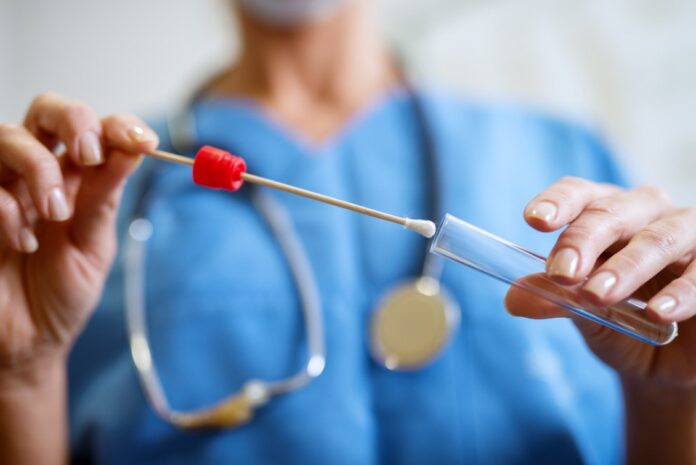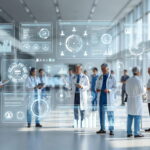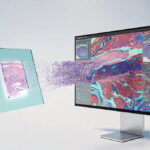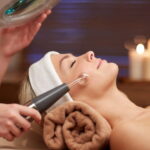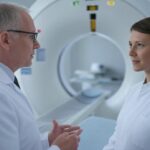Forensic nurses are an increasingly important part of the healthcare industry. This article will explore how forensic nurses differ from other nurses as well as the kind of technology they use in their work.
Are Forensic Nurses Different From Other Nurses?
The main difference between forensic nurses and other nurses comes down to education. All nurses in the United States must meet educational requirements in order to be licensed and work with patients, but the education in question varies from program to program.
Forensic nurses, in particular, go beyond an undergraduate degree. Instead of earning a bachelor’s degree and looking for full-time work, aspiring forensic nurses must search for advanced educational programs.
Sometimes forensic nursing programs online, such as the one offered by Cleveland State University, provide everything students need to succeed in the industry, while some people might opt for in-person classes instead.
Once their education has been completed, forensic nurses will begin working directly with patients just like other nurses. Some of their responsibilities will be different, however, thanks to their advanced education and specialized degree.
With that in mind, here are some of the technologies forensic nurses commonly use while working:
DNA Technology
Because they are responsible for collecting, analyzing and preserving medical evidence, including organic tissue and various bodily fluids, forensic nurses often find themselves using DNA technology. DNA technology is also known as the observation of phenotypes and genotypes of organisms.
This kind of information is tied to the evidence forensic nurses gather. DNA technology helps forensic nurses examine the evidence they carefully collect and preserve.
This sometimes leads to the determination of what weapon was used in a violent altercation, which individuals were active or present when crimes occurred, which individuals could not have committed the crime, and even the identity of victims in single and mass traumatic events.
There are a few different kinds of DNA technology used in forensic nursing. The first is the technology surrounding short tandem repeats (STRs). STRs are different from person to person, making examining them useful when inspecting crime scenes and identifying people.
Technology related to DNA profiles is another commonly used DNA technology in the forensic nursing field. This kind of technology helps distinguish the people involved in the crime in question. DNA profiles can be compiled to determine the identities of victims, possible witnesses and possible perpetrators.
Alternative Light Sources
Just like in a ‘CSI’-type show, investigators use a black light to look for traces of bodily fluids. Known as ‘alternative light source technology’, this kind of technology is actually used in real crime scenes today. Forensic nurses use alternative light sources often to make sure they are collecting as much relevant information as they can surrounding their patients and the trauma they have endured.
While alternative light sources can be used in a wide variety of cases, it is more common in certain situations. Forensic nurses use them primarily in domestic violence cases. Alternative light sources can detect injuries and bruises underneath a victim’s skin, making them especially useful in documenting cases of strangulation.
Alternate light sources can also be used to detect the presence of blood, but only if the area is treated with luminol. After it is sprayed with luminol, the blood will show up under a black light.
Forensic nurses must know when to use alternative light sources, how to use them, and how to identify the materials they reveal.
Photos and Video
Forensic nurses must often take photos of the victim’s injuries and, sometimes, the crime scene itself. This helps document the crime as well as its aftermath. Without video and photo evidence, there is little in the way of ‘proof’ to show the courts or law enforcement. For this reason alone, it is imperative that forensic nurses understand how to use both recording tools.
You might be wondering why both photos and videos are commonly used in forensic nursing. The answer is quite simple. Cameras and videos do similar things, but they excel in different areas.
Digital cameras are typically far more detailed and easy to carry and use. This makes them ideal for isolating areas that need to be preserved and capturing them in high definition, without the movement of the video camera sacrificing quality.
A patient with bruises that need to be recorded, for example, will likely have photos taken instead of video.
On the other hand, video is more useful in certain situations. When a large crime scene needs to be recorded, for example, video is often the quickest and most ‘authentic’ way of doing an initial run-through.
Video is a good way to prove the authenticity of the record, too, as uncut videos are good for proving that nothing has been tampered with once law enforcement (or, in this case, forensic nurses) arrived at the scene. If the goal is to show the whole of a crime scene, video is a good way to begin.
That does not mean that photos will not need to be taken of certain items, of course. But you can consider photos to be moments in time. Five photos taken over the course of an hour, for example, are equal to a few minutes of that time, at most. Video, on the other hand, captures everything on an ongoing basis.
Both videos and cameras are routinely used by forensic nurses.
Technology trends
The technology used in forensic nursing might not seem cutting-edge, but that does not make it any less accurate and important. Without the investigative and recording tools described above, forensic nurses have a much harder job accurately documenting potential crimes and the trauma they cause to victims.
The industry is becoming more saturated with technology as time passes, too, with traditional and new technology alike being adapted and developed. The goal is to make forensics, in general, more accurate and straightforward for investigators as well as for the legal system, which must rely on experts such as forensic nurses to guide them through the findings.
Read Also
- Automated Healthcare Software Solutions: How Intelligent Platforms Are Redefining Clinical, Administrative, and Operational ExcellenceThe healthcare industry is undergoing a seismic transformation. Rising patient volumes, value-based care models, staffing shortages, and complex regulatory demands have prompted organizations to look beyond traditional tools and embrace advanced software automation. As providers search for innovative partners capable of tailoring these sophisticated systems to real-world workflows, many turn to MCSI (Managed Care Systems,… Read more: Automated Healthcare Software Solutions: How Intelligent Platforms Are Redefining Clinical, Administrative, and Operational Excellence
- Why Whole Slide Imaging Shapes the Future of Digital PathologyWhole slide imaging has become one of the most important developments in modern pathology. It changes how tissue is examined, how cases are shared and how pathologists collaborate with the wider care team. More than a technological upgrade, it represents a shift in how laboratories think about their workflow, their storage needs and the tools… Read more: Why Whole Slide Imaging Shapes the Future of Digital Pathology
- Comparing 2025 Dental Practice Management Software OptionsSoftware Key Strengths Potential Limitations Best For Dentimax • Offers both cloud-based and on-premise/server deployment. • Tight integration between imaging (e.g. X-ray sensors) and practice management, charts, treatment planning, imaging all in one. • Transparent pricing and relatively simple UI/usability; solid for small to medium general practices. • May lack some of the… Read more: Comparing 2025 Dental Practice Management Software Options
- Top Innovations in Dermatology and Skincare TechnologiesHave you ever wondered how skincare keeps getting better year after year? From fighting acne to reducing wrinkles, today’s treatments seem more advanced than ever before. The tools and techniques used by dermatologists today are smarter, safer, and more effective than those we had just a few years ago. These breakthroughs don’t just help with… Read more: Top Innovations in Dermatology and Skincare Technologies
- Telehealth and Beyond: Building a Connected Continuum of CareHealthcare is on the verge of a radical transformation. Technology no longer simply supports medicine; it actively shapes how care is delivered and experienced. Achieving a seamless continuum demands more than deploying tools—it requires intentional design, coordinated teamwork, and innovative platforms that adapt to diverse clinical and patient needs. This article explores key strategies for… Read more: Telehealth and Beyond: Building a Connected Continuum of Care
- Optimizing CT Protocols: The Hidden Key to Efficiency and Cost Savings in RadiologyIntroduction: Why CT Protocol Optimization Matters Computed Tomography (CT) is a cornerstone of modern diagnostic imaging, providing critical information across nearly every medical specialty. However, maximizing the value of CT — both clinically and financially — requires more than just advanced hardware. The real secret lies in the optimization of CT protocols. When CT protocols… Read more: Optimizing CT Protocols: The Hidden Key to Efficiency and Cost Savings in Radiology

